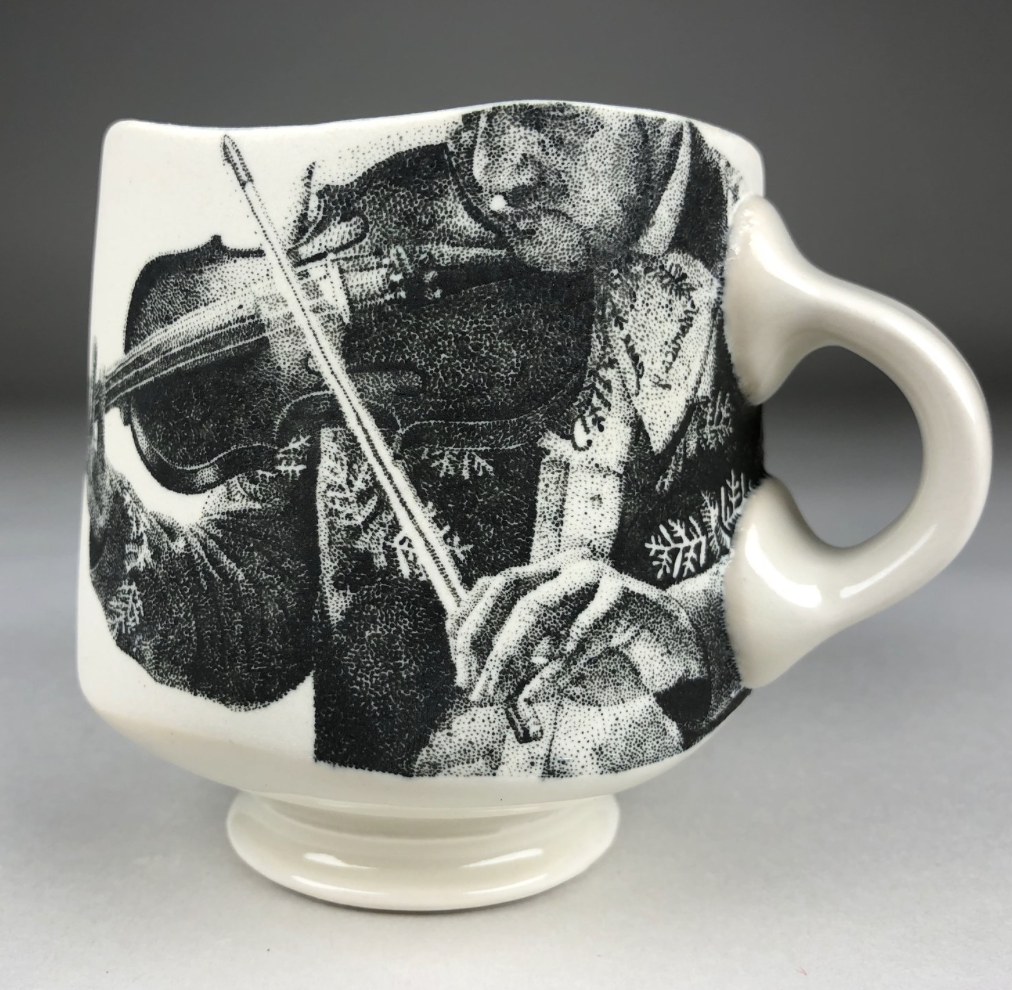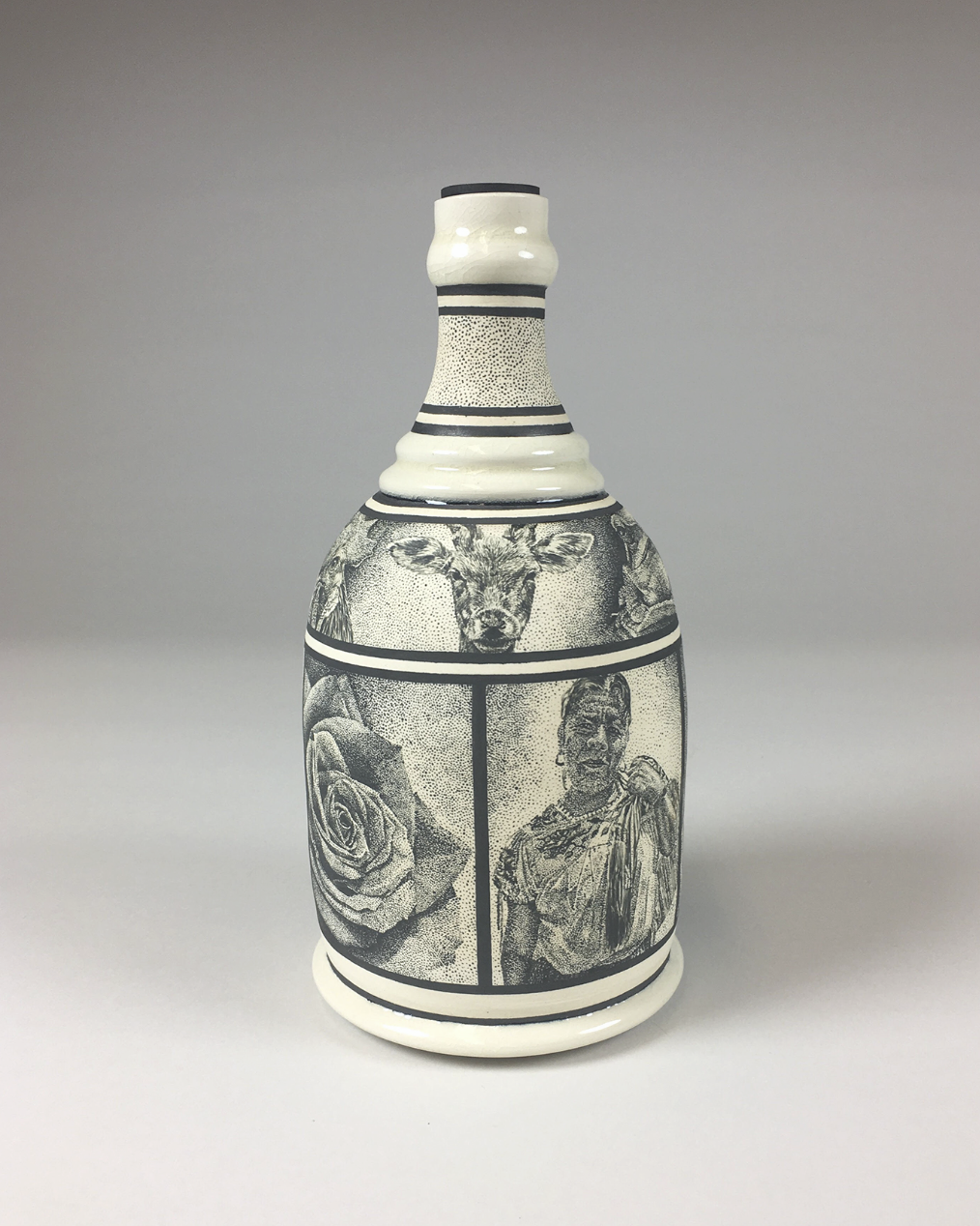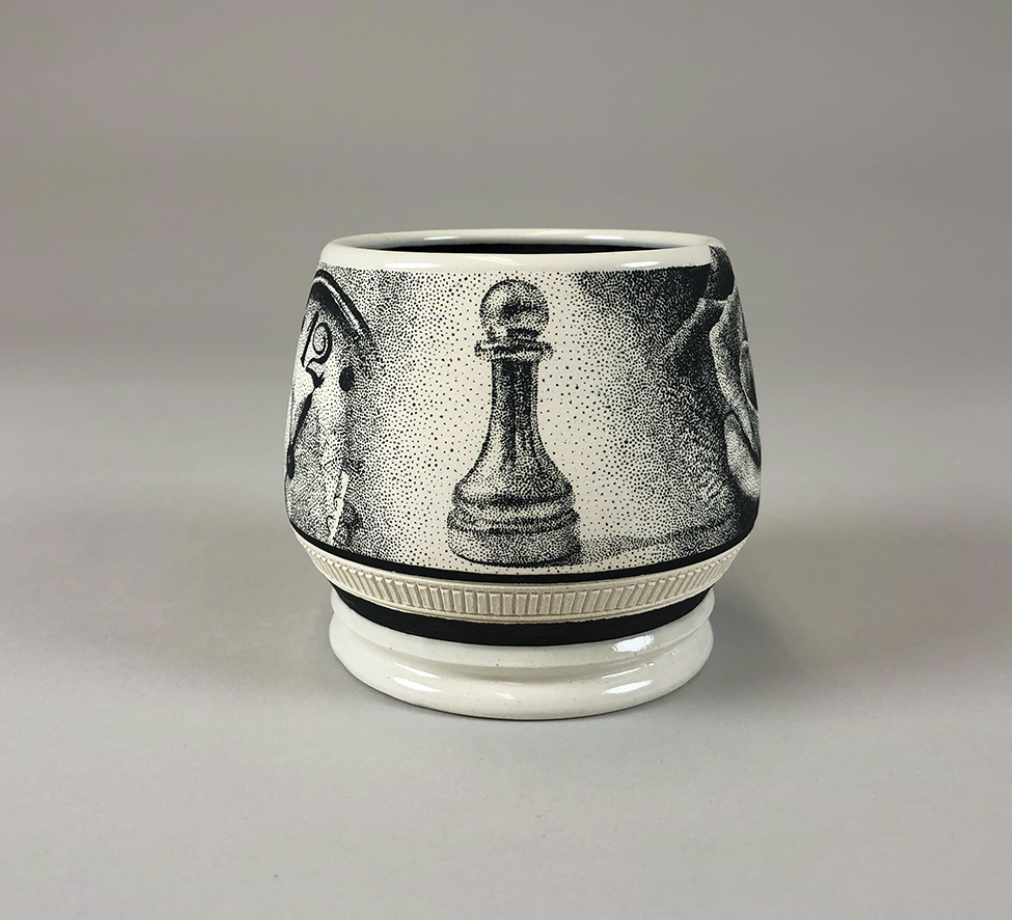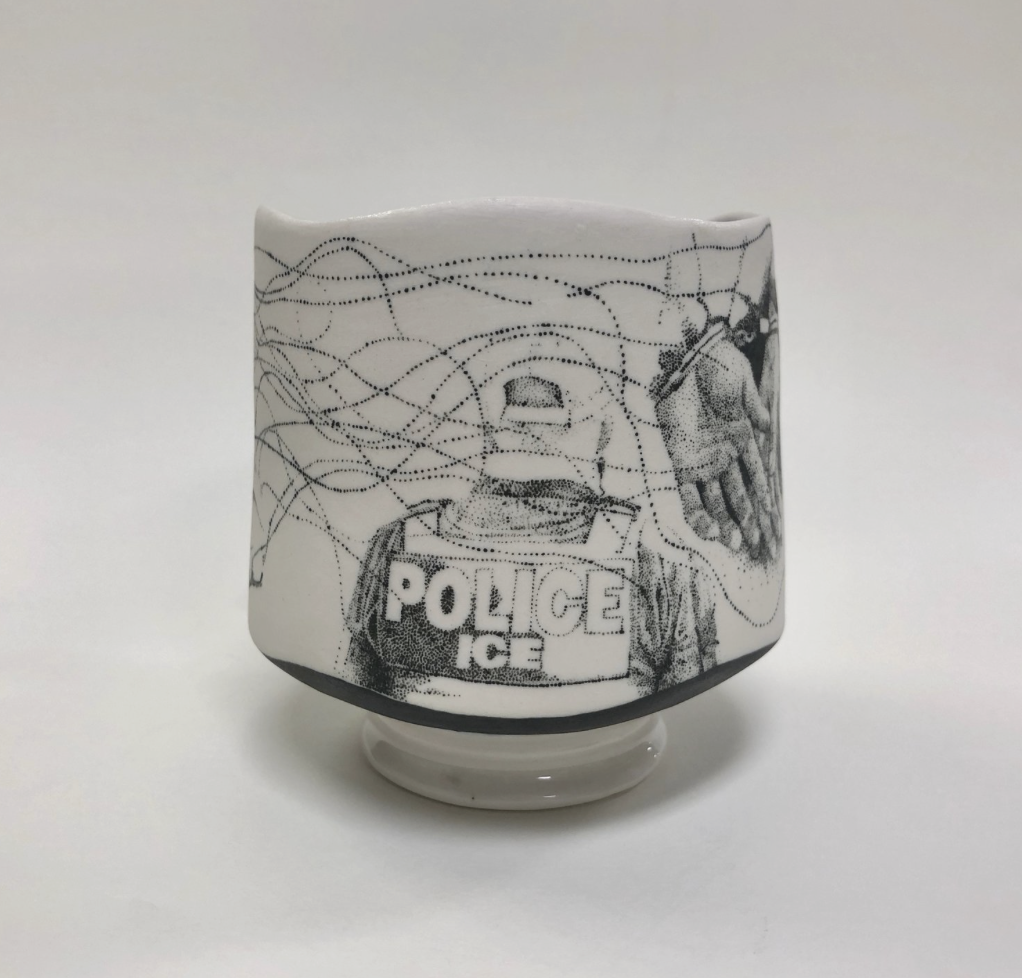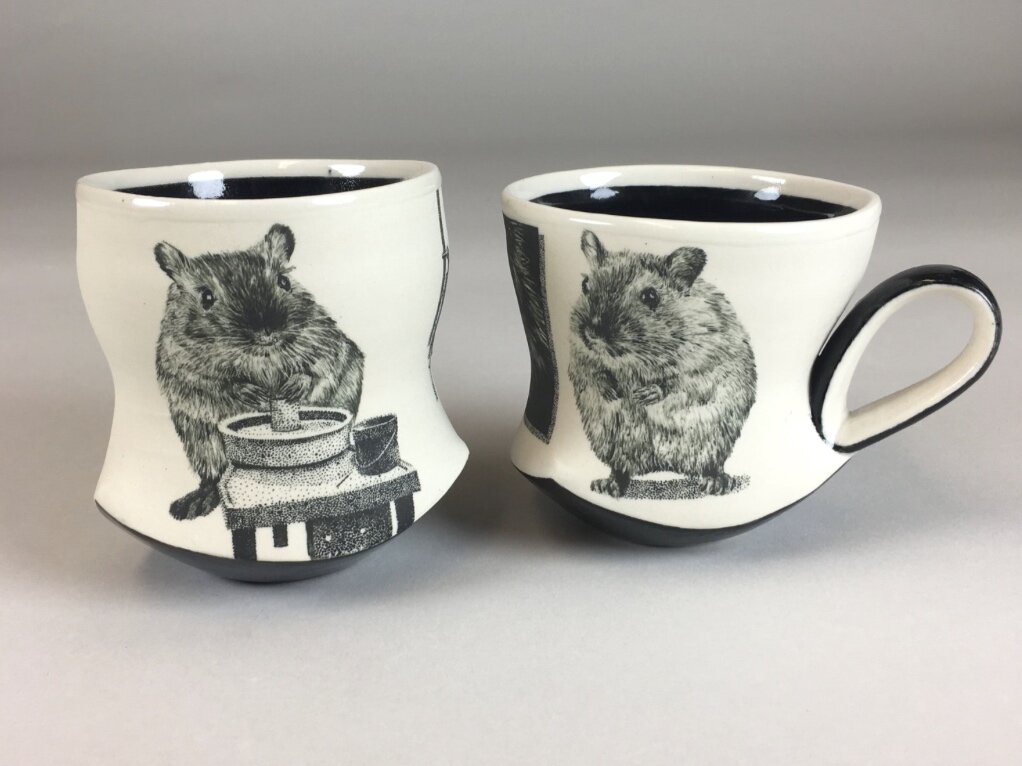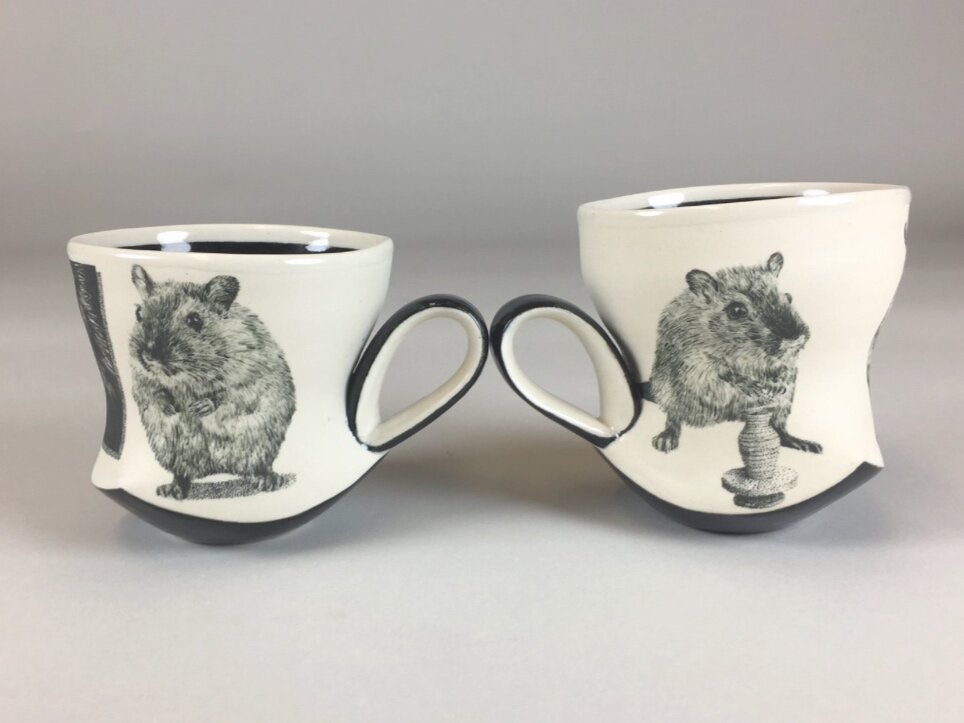Conversation and Collaboration with Juan Barroso
/Juan Barroso
Mexican Culture, Mexican labor and the immigrant experience in the United States.
More About the Artist: http://juanbarrosoart.com/
What’s your background? How did you get to where you are today? Would you like to share your parents’ story and why they chose to immigrate to the United States?
I was born in Oklahoma City, Oklahoma. My grandparents and their children received their residency at the end of Reagan’s presidency. All except my mother. Her marriage to my father somehow slowed her application process, and she ended up moving to Mexico with my sister and I to wait for the paperwork to go through. My mother washed clothes, sewed clothes, repaired clothes, and sold clothes in the town of San Miguel Octopan to make sure we had a roof over our heads and would not starve. I was frequently sick, and although my dad tried to send money from the U.S, he could only do so much. I was too young back then to realize how little we had. My mother finally got tired of just barely getting by, and we moved back to the U.S. when I was 9. For the next 13 years, we lived in the shadows. With parents that were undocumented immigrants, I was always afraid we were only a speeding ticket away from deportation. My father worked in construction, my mother cleaned houses, and I kept my head down and became the first in my family to go to college. My parents became legal residents of the U.S. in 2015, and I no longer had to hide pride in a Mexican heritage and Mexican values. It changed everything. I was no longer scared to talk about where I came from, and set out to reconnect with my roots. My family started out under adobe bricks and dirt floors. Now we live in homes with A.C. and ceramic tile floors. How did I get where I am today? I think it was my family’s resilience, patience, the dignity of their labor, and either the grace of god or blind luck. I paint on pots knowing it is a privilege to depict part of the immigrant experience.
Juan working at his studio in Denton, Texas.
I read a bit about you and your work on your website. Is there anything else that you would like to expand on? Has your work always been centered around Mexican culture and the immigrant experience or has it evolved over time?
Right now I can split my work into three periods: before my parents were legal residents, a celebration of Mexican culture after their residency status, and my attempts to humanize the immigrant by depicting the immigrant experience. Before their residency, I painted cats, boats, mountain lions, favorite actresses, family portraits, wolves, and roses. I felt lost and mostly worked on techniques and craftsmanship. When my parents received their work permits, I began to explore Mexican culture with my work, including the food, music, and our indigenous heritage. I embraced my bilingual and bicultural identity with happiness. What at first was mostly a celebration of culture became the realization that not every immigrant is as lucky as my family has been. Some don’t make it out of the desert. Some are dehumanized, called aliens, and end up in cages. Many are exploited and used for cheap labor. My hope is to help humanize the immigrant and break down notions of us and them.
How has your art been perceived in Texas and nationally? What are common narratives/conversations that come out of people viewing your art?
I have been told that my work is heartbreaking, poignant, and beautiful at the same time. I have received a lot of support from the ceramic community, who I believe to be tolerant and accepting of differences. I have mostly shown my oil paintings in Texas and won a first place in a juried show in Texarkana a few years ago. I have received a lot of support from California, including El Comalito Collective, a gallery representing underrepresented artists. I am now selling my work through Companion Gallery in Tennessee thanks to Eric Botbyl, who believes in me and has been a good friend since the first ceramic juried show I ever applied to. When people talk to me after seeing my work, several mention their positive experiences with immigrants. Sometimes it is a story of someone who shared a meal with them, a story of great craftsmanship in a project or job, or a story of a white family member that also worked in the professions I depict. Sometimes, it seems like a chance to find what makes us similar.
How has your career as an artist developed? Have you always been inclined to make art? What are some of your goals in the next 5 years?
I was an Accounting major in college. On my way to buy a baked potato I was walking by the art building at The University of Oklahoma, when I saw a few teachers doing portfolio checks for students. I showed one of the teachers the photos I had of my drawings and he told me I should be an art student. When I was 8, living in Mexico, my mom had convinced an art teacher to let me sit in the back of his class. All I remember is people twice my height, and buildings on a chalkboard in what I now know is one-point perspective. When I was invited to enroll in the art school, what I had only considered a hobby became the only thing that made sense to me. I learned how to paint, experimented with many mediums, and took a ceramics class thinking ceramics meant putting little tiles together to make an image just like the steppingstone kits you can find at any craft store. I was wrong. It became everything. To make something beautiful and of value out of such a humble and mundane material felt like a metaphor of my family’s life. I combined my drawing and painting with clay as my canvas and built a portfolio for graduate school. In grad school, I focused on the marriage of image and form and gained teaching experience as a teaching assistant for drawing classes and as a teaching fellow for beginning ceramic classes. In the next year, I want to learn more about glaze chemistry and 3D printing to become a better applicant for teaching positions. I am currently struggling to set up a studio space and afford a kiln. Finding a way to continue my practice is my top priority. I also want to read more books on Latin American history. Five years from now, I hope I can say I finally found the perfect union between image, form, and concept.
What feeds your artistic practice? What do you like to do when you are not painting or creating ceramics?
For some time now, my art has been used to cope with the injustices I see on the news or read about online. Sometimes what inspires me is the construction workers by the highways or on rooftops. Building fences with my dad always renews my pride in the labor of immigrants. When I am not painting, I like to weave or knit scarves. It’s not cold very often in Texas though, so the scarves are mostly made for the joy of the process. The repetition is calming, like praying with a rosary or painting dots. I like to read and am currently hooked on Brent Weeks’s work. I also love chess. Most of the guys in my family are great chess players, and I have only won against my grandpa twice. It is the most beautiful game.


